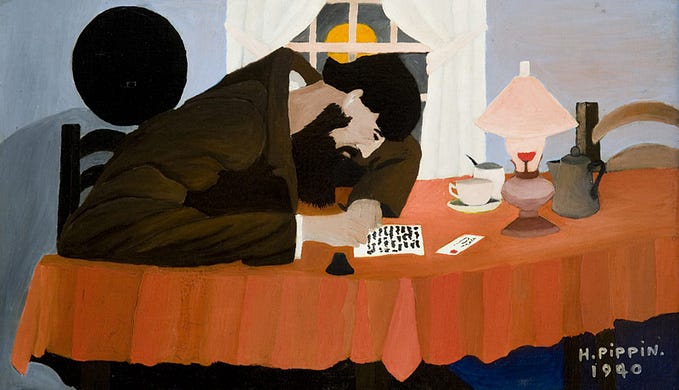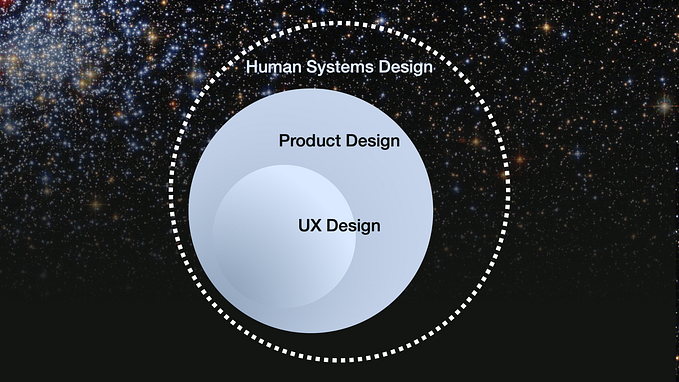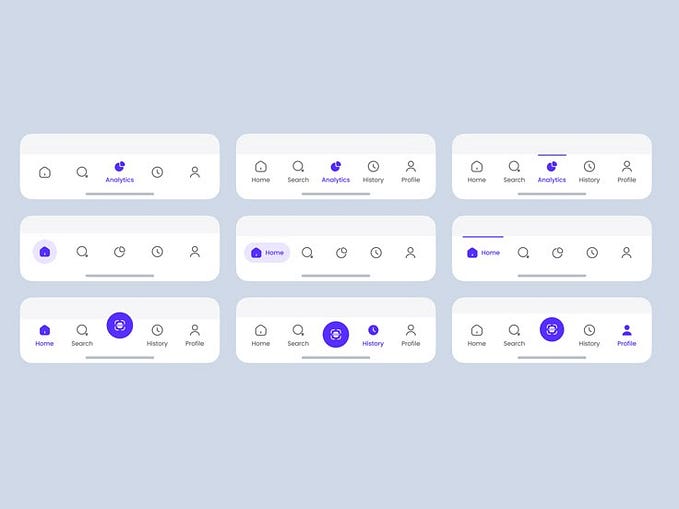Since the day I started working as a UX designer, I’ve questioned myself, ‘What is it exactly UX Design? Why can’t we just define ourselves as UI designers or product designer?’ As the products we are working on are mainly about interfaces and the products itself.
I come from a visual design background, and I’ve been working as a designer for years now. Although it was early in my design career phase, Art and Design seemed to come to me very naturally even I was very young. From times to times, I thought I am a natural creative, but is that true?
I still remember that feeling of being overwhelmed and confused at the same time when I was introduced to UX Design for the first time. I had thought that I have been doing all the right things all these times until then, it came out it was not. All these methods, efforts and thoughts in the design process have made my mind blown.
The question pops in my head immediately, what is Design even means?

What exactly is Design?
Let’s talk about Design. What exactly is Design? The subject itself certainly has come from a long history of transformation and evolution. However, the essence of it has never changed.
To be precise, according to the definition by Merriam-webster, it could mean:
1. A few meanings is a particular purpose or intention held in view by an individual or group.
2. The creative art of executing aesthetic or functional designs.
That being said, there’s never a clear line between Art and Design. Design should always embrace both aesthetic and functional purpose. Even though Design had to be initially about solving problems, there can’t be the sole purpose it serves. As Elon Musk said,
— Life’s needs to be about more than solving problems.
You need to wake up and be excited about the future, and be inspired and want to live.
Therefore, UX design should not be only just about the science of data and numbers. User experience, as to how it was labelled, it should be about the experience of being in the journey. It needs to be more than just solving problems, and it should also be giving you excitement while experiencing it.

Design is on a spectrum
When Apple launched a new iPhone, we did not just get excited about how it can solve our problems. It’s about everything it offers; How Siri could allow us to interact with our phone with our voice, the security it provides, how its new camera will enable us to take a better photo, how Animoji is here to change our daily life about messaging, the branding, their marketing and ads we saw that makes us think it is a really cool phone; It’s also about the hundreds of other features we probably have not explored yet. It’s really about the whole experience.
Let’s be honest, how many times did we get all hyped up and hooked to purchase a new product from your favourite brand/store before it even launched? That is part of the experience, and all of these factors are based on User Experience Design. As a consumer, you didn’t just start the journey after you got your hands on your new iPhone. Without realisation, you have just started your journey as a consumer the moment you click into their website. It’s a whole journey.
UX Design should always be on a spectrum; each pillar should support another to create a better product. Typically, it consists of User Experience, Interaction Design, User Interface, Visual Design, Customer Experience, and Branding. Ultimately, these are the elements that are connected to form the product itself.
Like Dan Saffer’s diagram showed, UX design is the big picture that covers most parts in a product. In fact, you can’t really “do UX design” without cross-path into another pillar. The diagram below should explain it.

The perpetual argument about UX & UI Design
During a few of my recent job interviews, I kept getting this question from my interviewers, “So, I understand that you’re working as a UX designer. Can you also do UI design?”. Since I’ve always been getting this question, I feel like I have the needs to clarify it.
I always think that people have a misconception when it comes to UX & UI design. When you ask them what the differences between both is, most likely you will get an answer goes like this “UI design is what you see on screens and UI designers only try to make websites and apps looks good and beautiful, so it is easier to use; while UX designer deals with more of an analytical and technical task.”
That is not entirely true. Like I mentioned it earlier, UX is the whole journey of the experience while UI is one of the main components that enabled the UX to be experienced by the user. UX is a journey, while UI is one of the enablers to let you experience the journey. I like how Jason Ogle would phrase it as,
UI is the bridge that gets us where we want to go; UX is the feeling we get when we arrive.
Let me give you another metaphor. You have been commissioned as an artist to paint an awesome picture for your client. You started with interviewing the client, what does she want and what is her favourite colour, her kind of art style, how big should the painting be, etc. You’ve just got an excellent idea. Oh, that’s great! Now you’ve started to plan what kind of paint, brushes and canvas should you be using, then poof! You decided not to paint anything.
A perfect blank white canvas. (My apologies to abstract art lovers) and that’s UX without UI.
I don’t understand why nor remember when did we decide to separate UI from UX. For ages, people are categorising UI design as Graphic Design. That is the most significant misinterpretation I’ve been listening for years. I’m afraid I have to disagree that UI designers are doing their job purely based on the aesthetical and visual sense. As much UX is about the analytical data and findings in your research, it is also very much about the creative and visual part in your design too. UX has always played a part in visual design and in fact, UI designers too, should pick up the books and start learning how UX did play a significant role in design too. UX and UI should come in side by side, not as an enemy, but best friends.
Even though I agree for the most part in Dan Saffer’s Venn Diagram, I, however, still find something is missing from it. Did you realise what is missing in the Venn Diagram? If you notice it, congratulations; If you didn’t, it’s alright. The missing component is UI design.

In fact, the big-name tech companies that I’ve had my interviews with do not ask if I can do either (UI and UX design); Instead, they asked me about my design process, which it obviously includes UI design in one part of the process. Otherwise, I wouldn’t label myself as a designer. However, I do understand there are people who expertise in specific areas. That’s why we also have the term UX Researchers or writers, etc. I think this is important, if you want to label yourself as a designer, please do the design works, study it, learn it and do it.
UX Design should be about the planning, the find outs in your research, the creative ideas you proposed and most importantly, the excitement to work on the product. No matter which part you are involved in, IxD, IA, UI, GUI, CX, SD, etc. They all belong together. In a great product, they rarely exist without each other; Else, it will just be another dysfunctional relationship. UX will always be part of the design process and vice versa.
Design is more than what your eyes could see
While there are many kinds of good design, great design is usually invisible. They usually hide in the plainest sight.
“Airbnb is probably my favourite app of all time.” A phrase that I always say to my fellow design peers. Airbnb was co-founded by two designer-entrepreneurs: Brian Chesky and Joe Gebbiaen. Over the years, Airbnb has been a massive contributor to the design community. They have poured in an enormous amount of efforts in designing their platform, brand, culture and ultimately, the company itself. Let’s not forget they also given us — Lottie, to help to bridge the gap between designers and developers on motion design.
In my opinion, Airbnb has the most beautiful and well-crafted design system amongst every product I’ve used, and yes, even better than Google. Why? Hear me out. While Google is run by engineering-driven culture, Airbnb’s has a much more robust and design-driven culture.
Airbnb doesn’t just offer a great user interface when it comes to design. I’m also talking about how easy to use their service to book accommodation for a trip. More importantly, the company has a healthy system when it comes to building a product. Airbnb has taken Design very seriously. Airbnb’s Chief Design Officer, Alex Schleifer emphasises the importance of fusing EPD (Engineering, Product and Design) while building a product from the start. I also like a phrase that he quoted,
Designers tend to design for themselves, whether they intend to or not. User research, meanwhile, often has limits. It’ll tell you what’s wrong, but it only rarely leads directly to great products. A true user perspective is something more nuanced, specific, intuitive, and independent.
It will not only let every team member contribute to their individual part in designing a product but also advocate their ideas to its potential.

Let’s take a moment to appreciate the Design Language System done by Airbnb. This DLS project was led by Karri Saarinen when Airbnb decided to revamp their Design System with a new look in 2015. Their goal was to create a more beautiful and accessible design language. They also wanted their designs to be unified to drive greater efficiency through well-defined, reusable and cross-platform components. To me, the revolutionary magic here is when they started to build a biomorphic design system and to view each of them as a living organism. Like living organisms, they can coexist, evolve or be replaced in the system. As Karri mentioned, This is one of the key points about the system compared to more atomic one — we don’t have a complicated network of interconnected parts and components.
This level of the details is absolutely insane to me. Creation of a holistic design language not only let designers and engineers share a common visual language; but also allow the various type of users: the young and the old have a more accessible understanding of using the app with varying levels of technical skills. Another great effort they did was to anthropomorphise the app; or in other words, to be more human, by creating clear and friendly messaging. Simple things like instead of saying “Rate your trip” we ask “How was your trip? It makes people feel more welcomed.
Great design exists when the user doesn’t even notice its presence. Navigating a user-friendly interface should feel natural and intuitive. The user should be able to understand its function and the meaning almost immediately. Every single detail forms the end experience for the users. It is the art style, colours, icons, font style, spacing, writing, sound design, interaction design, the user flows and many smaller details you wouldn’t notice that ultimately give you the happiness and ease of using the product itself. The user is guided by an invisible hand made of these every tiny part of details by the designers, and this is what I call User Experience Design.
Conclusion
Hence, designing should be packed with all sorts of elements that make you feel excited to be part of the journey and to be inspired by it.
Like every substance in our world, the meaning of UX Design is in a constant change, in order to evolve but its essence is never meant to change from helping us to create a better life for others.
Design has certainly played a vital role in every product and company. The future of Design should rely on both rational and inspiring mind.
I would love to end this article with a quote from a man I always felt deeply admired and inspired, Albert Einstein.
“For knowledge is limited to all we know and understand, while imagination embraces the entire world, and all there ever will be to know and understand.”










